Consumption - Definition

Fuel Consumption in Cars – Meaning, Factors & How to Improve
Table of Contents
- Fuel Consumption in Cars – Meaning
- Fuel Consumption vs Fuel Economy
- How to Calculate Fuel Consumption
- Average Fuel Consumption in Bangladesh
- Factors That Change Your Fuel Use
- Car Fuel Saving Tips
- Product Review: Fuel‑Efficient Cars
- Comparison: Petrol, Octane, CNG, Hybrid, EV
- News & Trends in Bangladesh
- Tools & Simple Fuel Cost Math
- FAQs
- Conclusion & Key Takeaways
Fuel Consumption in Cars – Meaning, Factors & How to Improve
I get asked a lot: what is fuel consumption? Here is the simple answer. Fuel consumption in cars tells me how much petrol, octane, diesel, CNG, or electricity my car uses to cover a distance. In other words, it is the fuel consumption meaning for daily driving. If I drive 100 km and my car drinks 8 liters, my car’s number is 8 L/100 km. If I drive 10 km using 1 liter, that is 10 km/L. Both show the same story, just in different ways.
In Bangladesh, roads are busy and heat is high. So I keep my car simple and smart. I track my number, compare trips, and make small changes to save. I use short words and clear steps in this guide so you can do the same. By the end, you will know how to read your numbers, which habits help, what local cars do well, and how to plan your monthly fuel budget with ease.
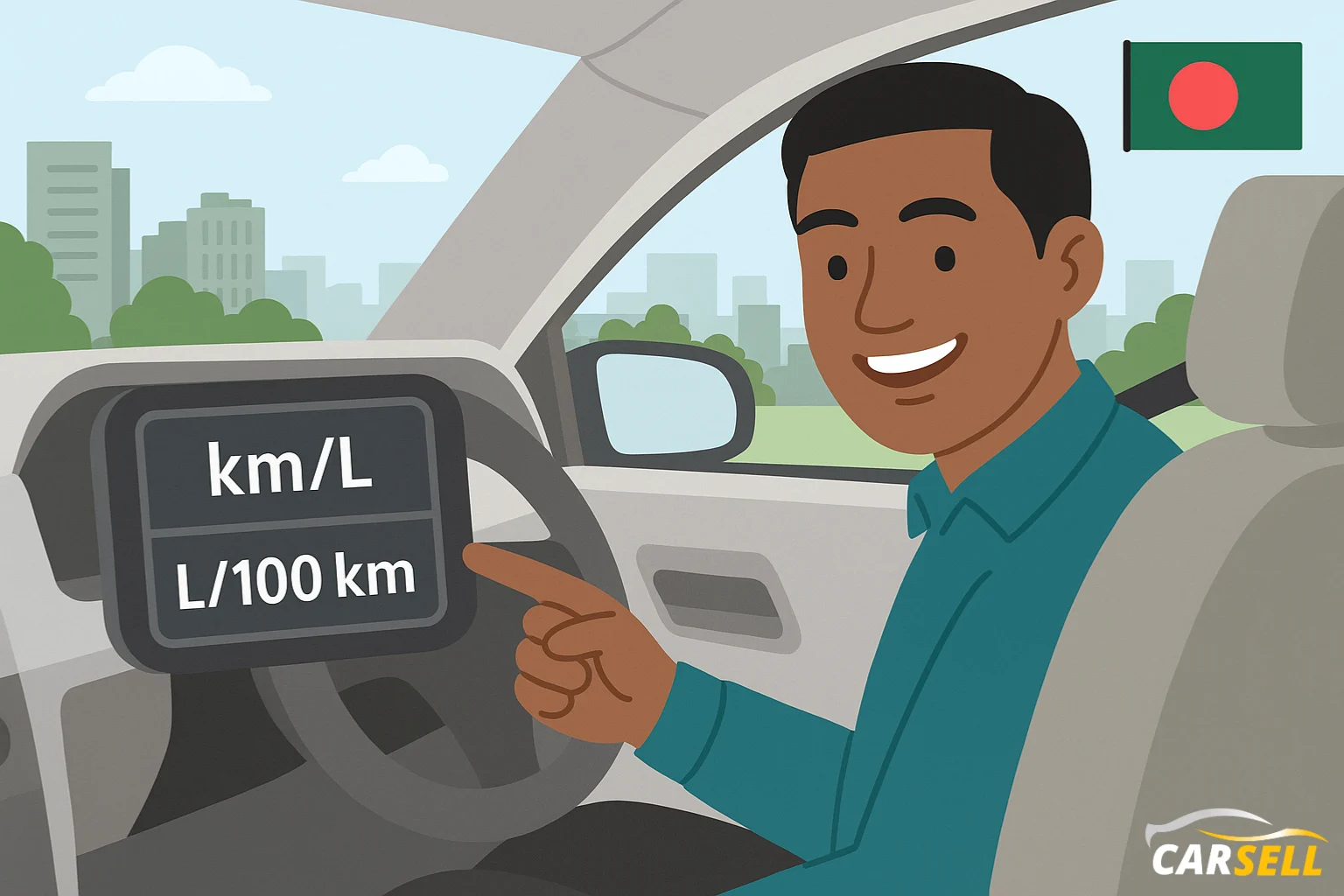
Fuel Consumption vs Fuel Economy
I keep two ideas in my head. First is fuel consumption in cars. It is “how much fuel I use.” Second is fuel economy in cars. It is “how far I go on one liter.” Low consumption is good. High economy is good. When my number is 6 L/100 km, the economy is about 16.7 km/L. When the number rises to 10 L/100 km, economy drops to 10 km/L. Same story, flipped.
People also say car fuel efficiency. That is the overall skill of the car and driver to turn fuel into motion. A clean engine, correct tire pressure, light foot, and smooth traffic all raise that skill. Bad traffic, heavy loads, and hard braking lower it. I try to focus on the things I can control, one short drive at a time.
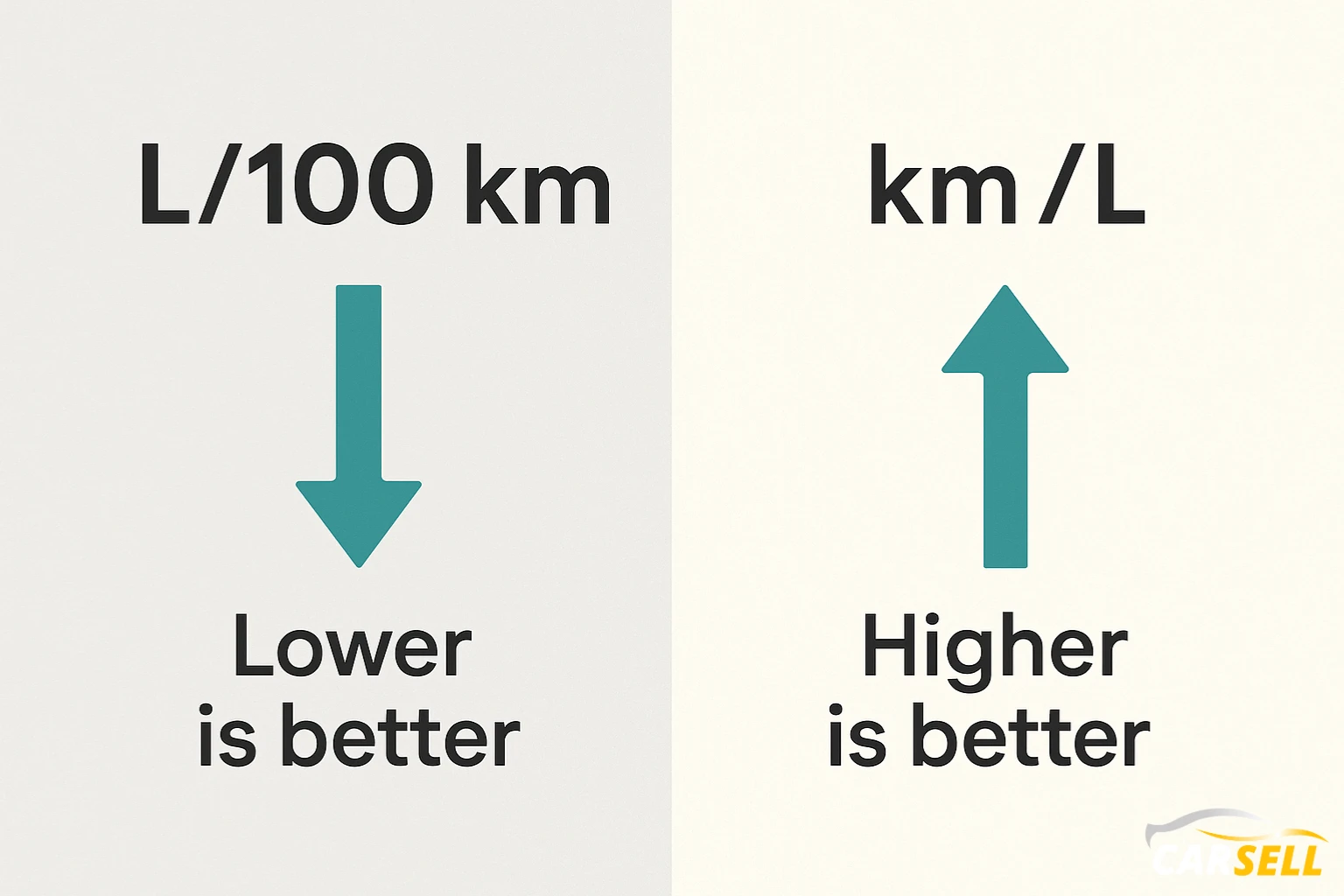
How to Calculate Fuel Consumption
Here is the friendly method I use. It works with any car, old or new. It is the heart of how to calculate fuel consumption at home without tools. I only need the trip distance and liters filled. I try to use the same pump and fill to the first click to keep numbers steady.
Step-by-step (Full Tank to Full Tank)
1) I fill the tank and reset my trip. 2) I drive normally. 3) Next time I fill the tank again, I note the liters added and the trip km. 4) I divide km by liters to get km/L (economy). Or liters by 100 km to get L/100 km (consumption). This simple loop makes my data real and not a guess from the dashboard.
Formulas you can trust
| Metric | Formula | Example |
|---|---|---|
| km/L (economy) | km ÷ liters | 420 km ÷ 28 L = 15 km/L |
| L/100 km (consumption) | (liters ÷ km) × 100 | (28 ÷ 420)×100 = 6.67 L/100 km |
km/L = 100 ÷ (L/100 km). And L/100 km = 100 ÷ (km/L). I save these in my phone notes.
Worked example for Bangladesh
I drove from Gulshan to Savar and back, with city and highway mix. My trip showed 310 km. I added 22 liters of octane to the first click. So my economy is 310 ÷ 22 = 14.09 km/L. The same in consumption is (22 ÷ 310)×100 = 7.10 L/100 km. I write both for practice. This helps me see change over weeks.
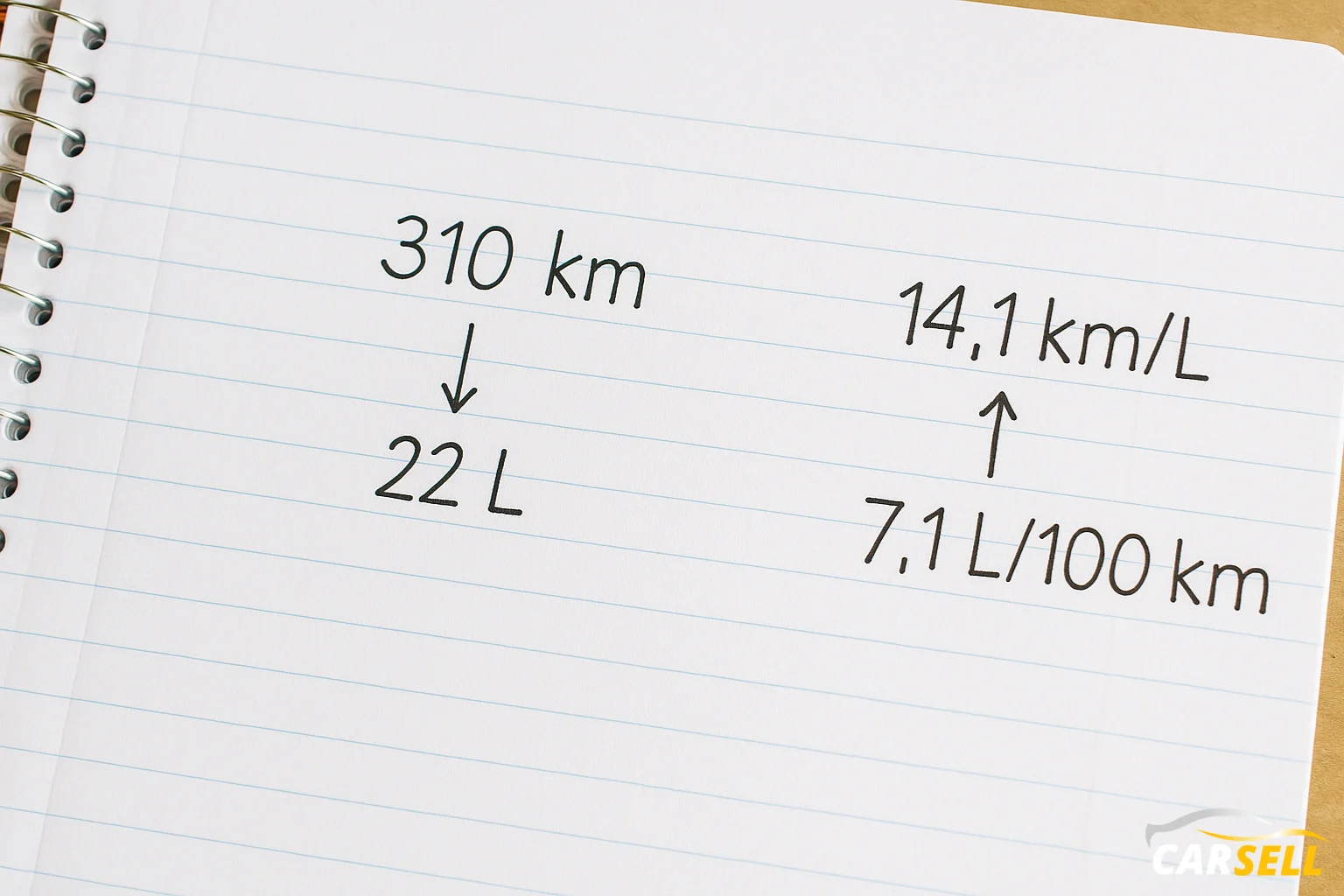
Average Fuel Consumption in Bangladesh
Numbers change by car size, traffic, A/C use, and road. Small hatchbacks in Dhaka might show 10–14 km/L on city runs. Hybrids may reach 18–24 km/L in gentle use. Big SUVs can be 6–10 km/L in heavy traffic. On highways like Dhaka–Chattogram, numbers improve because speed is steady. When people ask about average fuel consumption, I tell them to track their own trips first and then compare with similar drivers.
Heat and A/C matter. A/C can lower economy by 5–15% on short trips. Short hops also hurt because engines warm up slowly. I try to batch errands into one longer loop instead of many tiny rides. This tiny habit makes a real difference in a week.
“What you measure, you improve. Even a small notebook can save you money every month.”
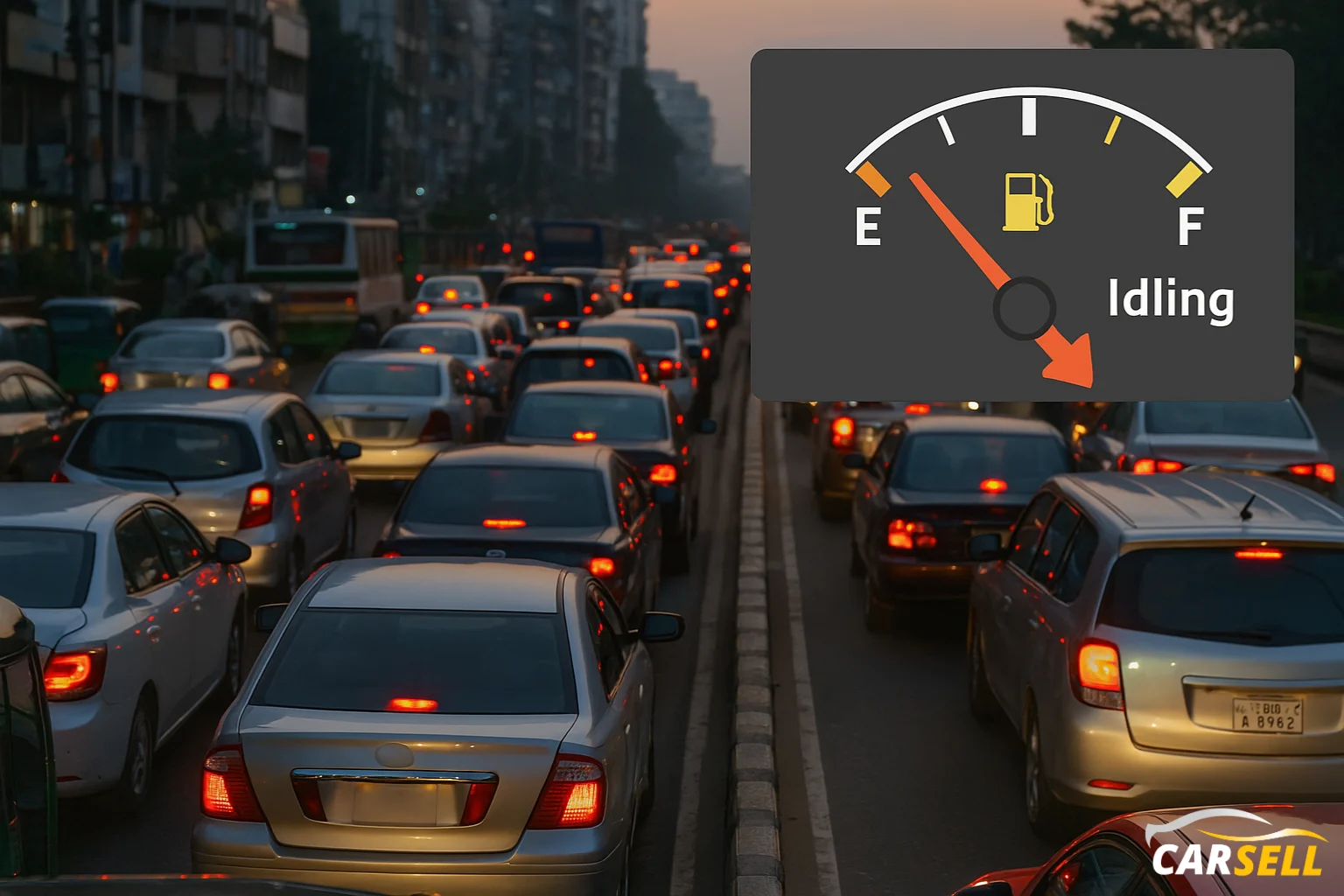
Factors That Change Your Fuel Use
These are the big levers I pull to reduce car fuel consumption. Some are free, some are cheap, and some need service time. I focus on the easy ones first and build steady habits week by week.
Driving style (smooth beats fast)
I leave home five minutes early and drive like I’m carrying water. Smooth starts, gentle braking, and steady speeds keep my engine happy. Hard bursts waste energy and then brakes throw it away. I use cruise control on long, safe highway stretches. Over a month, this simple calm style saves more fuel than any single gadget I can buy.
Maintenance (small checks, big gains)
Clean air filters, fresh plugs, and correct oil grade support car fuel efficiency. Low tire pressure is a silent thief. I check my tires when cold every two weeks and before road trips. A 10% drop in pressure can cost me 2–3% in fuel. Wheel alignment also matters. If the car pulls to one side, I fix it soon to avoid both fuel and tire loss.
Load & aerodynamics (light and tidy)
Extra weight makes the engine work harder. I remove roof racks when I don’t need them. I also clear the trunk. A tidy car is a thrifty car. At higher speeds, open windows can add drag; if I need fresh air, I keep the opening small or use the fan on lower speed.
Fuel quality & matching octane
I use fuel from busy stations with good turnover. I match octane to my engine’s need; more is not always better. If my manual says “regular petrol” I don’t pay extra for high octane unless the car knocks. Good habits beat “additives” that promise magic. I also keep the cap tight to avoid vapor loss.
Car Fuel Saving Tips (Bangladesh‑friendly)
Here are my favorite car fuel saving tips. They are easy, safe, and work in our roads and weather. Use two or three this week and add more next week. Small wins add up.
- Plan one smart route with fewer left turns across traffic. Waiting at junctions burns fuel.
- Use apps or radio to avoid jams. Peak hour delays are fuel traps.
- Keep tire pressure at the door-jamb spec. Check when tires are cold.
- Shift early on manuals; on automatics, lift gently to let it upshift.
- Turn A/C to a steady, moderate setting. Full blast, off, then full blast again wastes energy.
- Remove roof racks and heavy items you don’t need this week.
- Service on time and fix any “check engine” light soon.
- Batch errands. Warm engines sip less than cold ones.
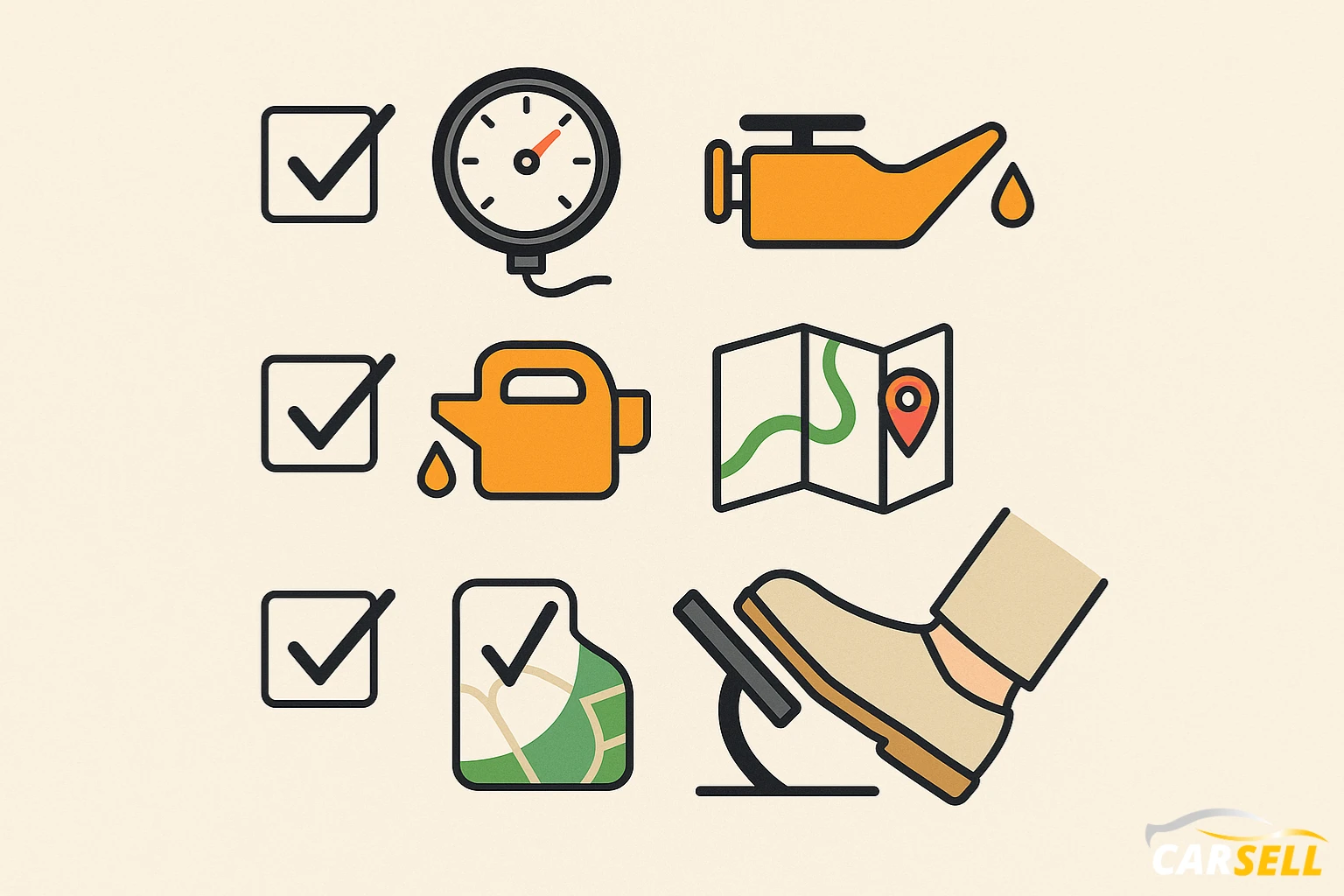
Product Review: Fuel‑Efficient Cars in Bangladesh
I looked at popular, easy‑to‑maintain models you can find on CarSell and local markets. These short notes are for daily buyers, not race fans. I focus on comfort, service access, and real‑world economy.
| Model (example) | Type | Typical City Economy* | Highway Economy* | Notes |
|---|---|---|---|---|
| Toyota Aqua | Hybrid | 18–24 km/L | 22–28 km/L | Great for stop‑go traffic, smooth ride. |
| Honda Grace | Hybrid | 16–22 km/L | 20–26 km/L | Spacious, refined cabin. |
| Toyota Axio | 1.5L petrol | 11–16 km/L | 16–20 km/L | Simple to maintain, strong resale. |
| Suzuki Alto | Small petrol | 13–18 km/L | 18–22 km/L | Ultra‑light and easy in tight lanes. |
| Toyota Premio | 1.5–1.8L petrol | 9–14 km/L | 14–18 km/L | Comfort first, calm highway manners. |
*Numbers are typical user‑reported ranges in gentle use. Your result depends on load, traffic, service, and weather.
Toyota Aqua – city hero
The Aqua’s hybrid system shines in Dhaka. It glides on battery at low speeds, cuts idle time, and restarts the engine smoothly. I like its nimble size and simple dashboard. If you drive mostly in city lanes, Aqua is a sweet spot for savings without stress.
Honda Grace – comfy and thrifty
Grace balances economy and comfort well. The seats are kind on long rides, and the hybrid system is mature. Service access is broad, and parts are available. If you need a family sedan with calm manners, Grace feels right at home.
Axio, Alto & Premio – dependable choices
These petrol models are easy to live with. Axio is the all‑rounder. Alto is tiny and playful for tight lanes. Premio is smoother for highway runs. Keep tires right and service on schedule and they return fair economy for their size class.
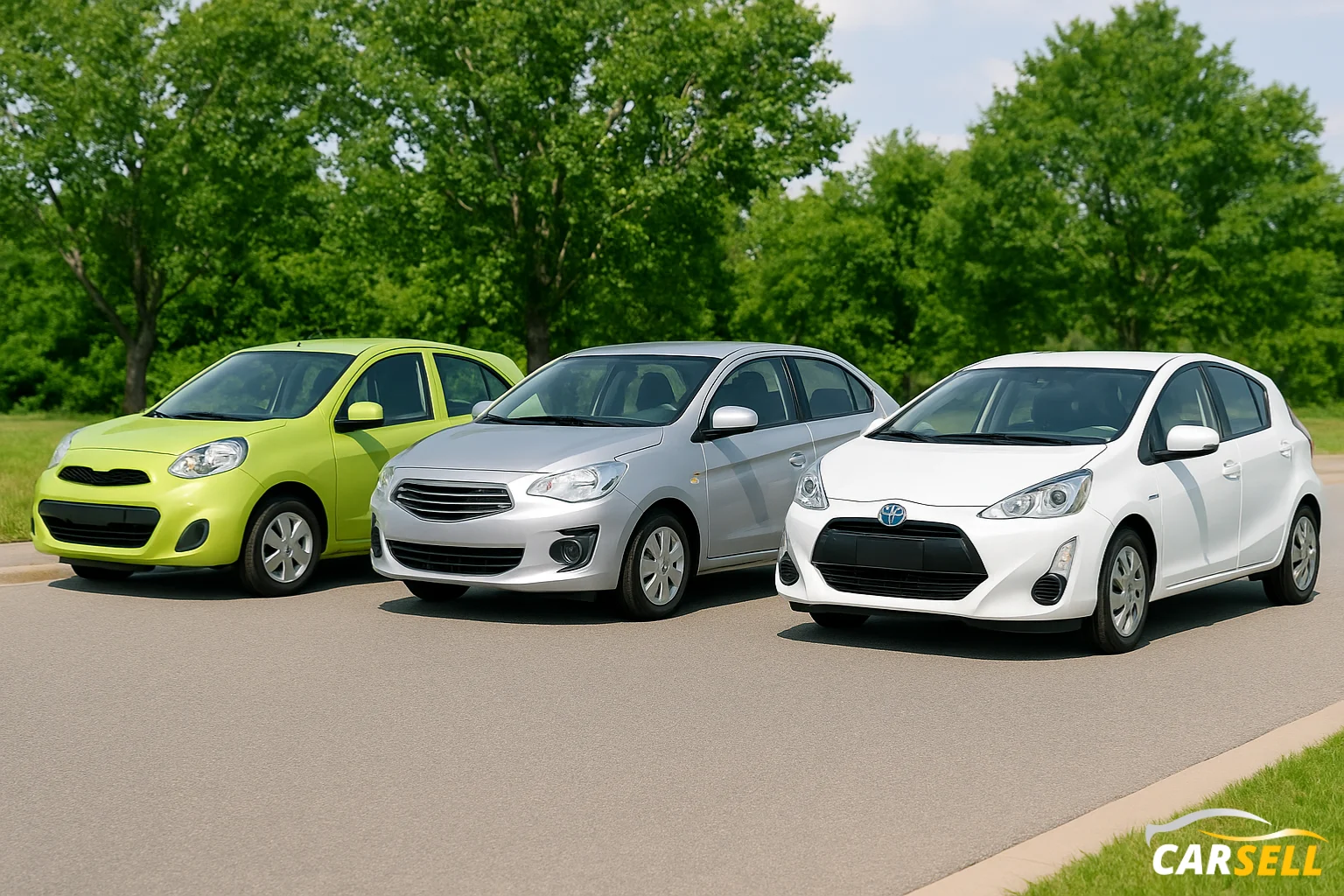
Comparison: Petrol vs Octane vs CNG vs Hybrid vs EV
This side‑by‑side view helps me choose the right fit for my roads and budget. Costs below are examples to explain the math. Prices change, so I always check current rates before I plan a month’s budget.
Petrol/Octane (most common)
Easy to find and quick to refuel. Small cars do well if I drive smooth. Example math: If my car does 14 km/L and I drive 1,000 km a month, I need ~71 L. If fuel is ৳120 per liter, I spend about ৳8,520. Good service and clean filters keep numbers healthy.
CNG (compressed natural gas)
CNG can be cheaper per km if stations are near me. Tanks take trunk space and refills may take longer. Tuning matters for smooth power. If I switch, I keep all safety checks up to date and use certified kits and workshops.
Hybrid (petrol + electric)
Best for stop‑go city runs. Regeneration during braking saves fuel and pads last longer. Battery health is key; I scan the car before purchase and budget for long‑term pack care. For many Dhaka routes, hybrids return the lowest day‑to‑day cost without charging.
EV (electric vehicle)
No petrol, smooth drive, low per‑km energy cost. Charging access, home wiring, and range planning matter. If my daily loop is short and I can charge at home, EV life feels calm. I also check for service support and warranty terms.
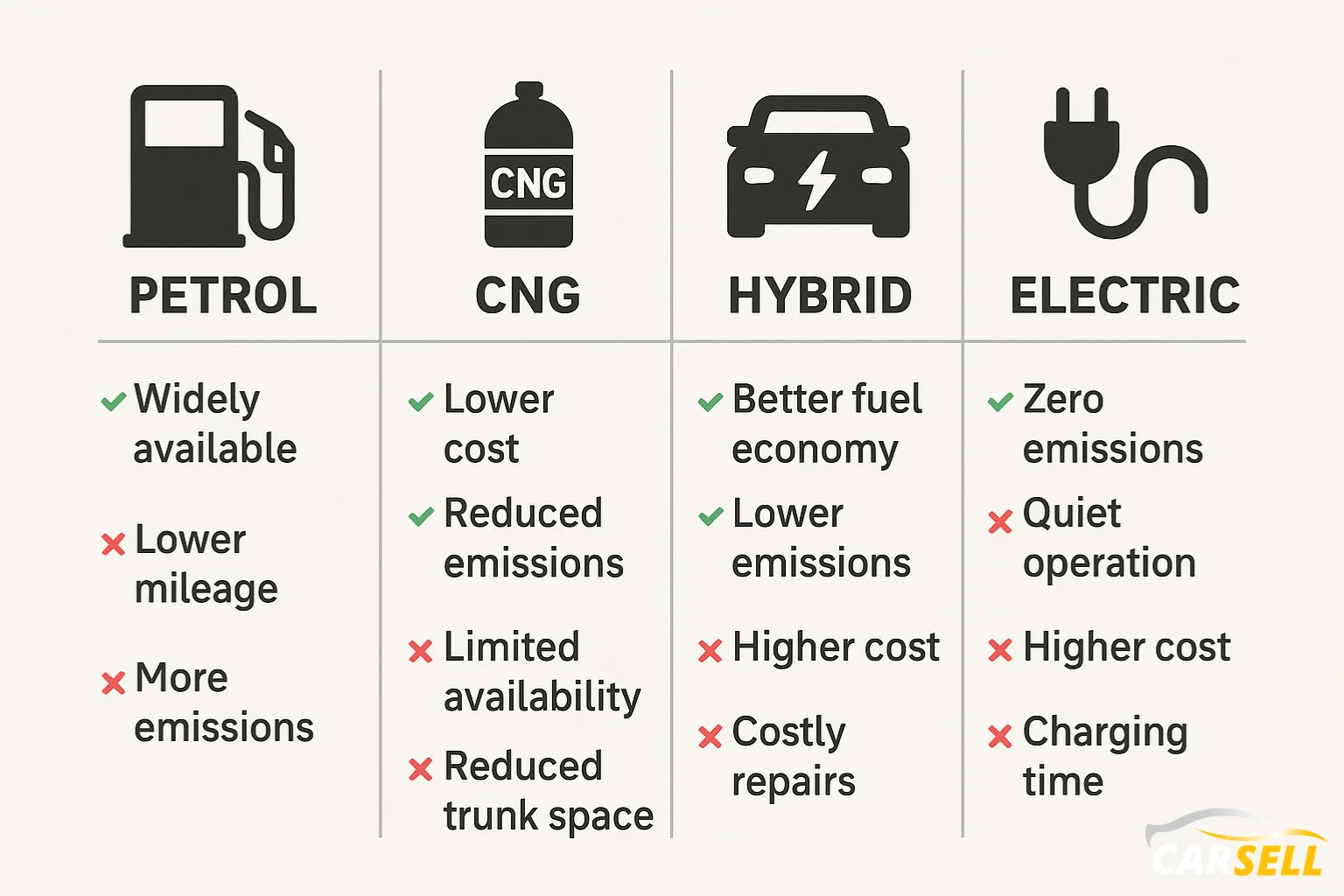
News & Trends in Bangladesh
Fuel rules and pump prices can change. New emission standards, better buses, and smart traffic systems all touch my wallet. Before long trips I check official notices and trusted local media. For price updates and policies, I look at the Bangladesh Petroleum Corporation site and the Ministry of Power, Energy and Mineral Resources.
I also watch for roadworks, flyover openings, or major events that may add delay. A ten‑minute route change can save both time and liters. When people ask me how to reduce car fuel consumption, I say: stay informed and plan. That is a free, high‑impact habit.
Tools & Simple Fuel Cost Math
I like simple math first. Here is a tiny table to estimate monthly spend. Replace with your numbers and see where your budget lands. You can also try our calculator on CarSell to make this automatic.
| Monthly km | Your km/L | Fuel price (৳/L) | Liters needed | Estimated cost (৳) |
|---|---|---|---|---|
| 1,000 | 12 | 120 | 83.3 | 9,996 |
| 1,000 | 14 | 120 | 71.4 | 8,568 |
| 1,000 | 18 | 120 | 55.6 | 6,672 |
Frequently Asked Questions
1) What is fuel consumption in a car?
Fuel consumption in cars is the amount of fuel your car uses to move a set distance. In simple words, it shows how thirsty your car is. We write it as L/100 km or as km/L. A lower L/100 km or a higher km/L means your car uses less fuel to go the same distance, which is good for your wallet and for the air we all breathe.
2) Is fuel economy the same as fuel consumption?
They talk about the same trip but from opposite sides. Fuel economy in cars (km/L) tells you “how far on one liter.” Fuel consumption (L/100 km) tells you “how many liters for 100 km.” If one goes up, the other goes down. Pick one unit and track it every month so you can see small changes and fix problems early.
3) How do I calculate my car’s fuel consumption at home?
The full‑tank method is easy. Fill up and reset the trip. Next fill, note the liters and trip km. For km/L, divide km by liters. For L/100 km, divide liters by km and multiply by 100. This method is better than guessing from the dash because it averages your whole drive and smooths out short‑trip errors and hills.
4) What is a good average fuel consumption for Bangladesh city driving?
It depends on car size and traffic. Small petrol cars can do about 10–14 km/L in Dhaka city, and hybrids can reach 18–24 km/L with gentle driving. Bigger sedans and SUVs may return 6–12 km/L in heavy jams. Your best guide is your own route: track a month and compare with drivers using similar cars on similar roads and weather.
5) Do A/C, tire pressure, and driving style really change fuel use?
Yes. A/C, low tire pressure, and hard starts all add up. A/C can lower economy by 5–15%, especially on short trips. Low tire pressure steals rolling efficiency every minute you move. A calm foot and smooth braking save more fuel than most add‑on gadgets. Check your tires when cold, service on time, and drive unhurried to see steady, real savings.
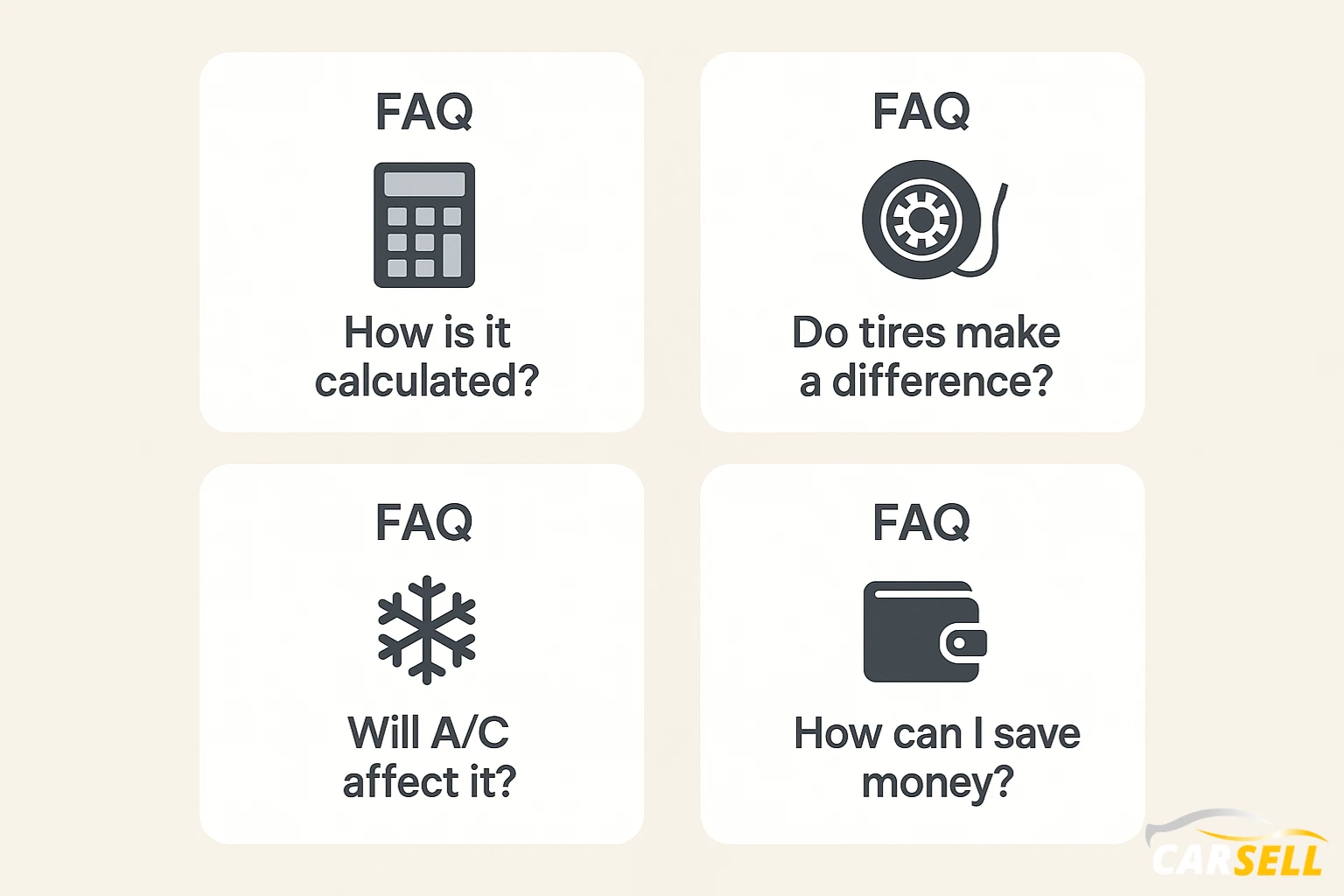
Conclusion & Key Takeaways
- Track one unit (km/L or L/100 km) for a full month.
- Fix the basics: tire pressure, service, light load.
- Drive smooth: fewer bursts, fewer long idles.
- Plan trips to cut short cold starts.
- Choose the right car for your route: petrol, CNG, hybrid, or EV.



















